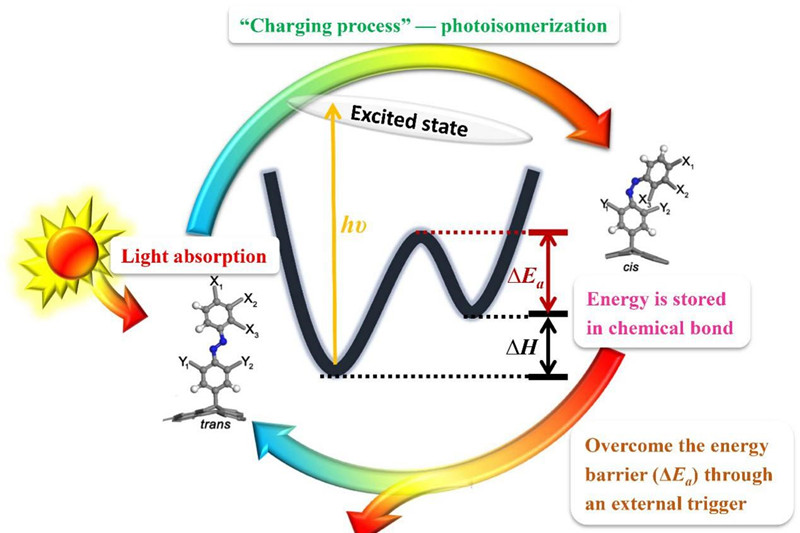Recently, Prof. Feng Wei from the School of Materials Science and Engineering of Tianjin University published a review entitled "Azobenzene-based solar thermal fuels: design, properties, and applications" at the Chemical Society Reviews (IF = 40.182). The first author of the paper is Ph.D. Dong Liqi. (Thesis link: http://dx.doi.org/10.1039/C8CS00470F)

Global warming and the energy crisis have made the world's energy prospects unsettling, and there is an urgent need to develop renewable and sustainable energy technologies and development strategies to reduce the dependence on traditional fossil fuels that are currently the main driving force of the global economy. Solar energy can be said to be the most abundant and inexhaustible natural resource in our galaxy. Therefore, it is particularly important to develop innovative technologies for capturing, converting and storing solar energy. Nowadays, there are various technical means to utilize solar energy, such as solar photovoltaic technology, solar heat collection devices, artificial photosynthesis and solar thermal fuel. Among them, Solar Thermal Fuels can store energy from solar radiation through structural switching of optical switch molecules and rearrangement of bonds, and then release energy in the form of heat. This closed cycle enables reversible solar energy conversion and energy storage in a single material system , with the advantages of zero emissions, ease of transport, recyclability, recyclability, and on-demand release in the form of heat.
At present, azobenzene has become a potential material for light-heat storage and controlled release due to its unique light-induced reversible structural transition characteristics, which has attracted the attention of researchers. The azobenzene photothermal storage and release cycle system mainly relies on the N=N molecular structure with photoinduced reversible configuration transition. The basic process is: azobenzene molecules (trans-Azo) in a low energy state, absorb photons of specific wavelengths, overcome the standard free energy required for isomerization of double bond/single bond structure, and transition to a metastable structure with higher energy (cis-Azo) to store the light energy in the chemical bond (high energy). The energy level difference between the high energy state and the low energy state is "ΔH");Due to the thermodynamic instability of the azobenzene molecule in the high-energy configuration, the metastable azobenzene molecule overcomes the energy barrier (ΔEa) to return to the low-energy configuration with external light stimulation such as light/heat/force. The stored energy "ΔH" is released in the form of heat, thereby realizing a reversible storage and release cycle of light-heat (as shown in the following figure).
This review highlights the recent advances in diverse azobenzene materials for solar thermal fuels such as pure azobenzene derivatives, nanocarbon-templated azobenzene, and polymer-templated azobenzene. The basic design concepts of these advanced solar energy storage materials are discussed, and their promising applications are highlighted. Undoubtedly, the molecular design and the optimal control of the microstructure are crucial for the realization of azobenzene photothermal materials with high storage energy. At the same time, however, increasing the energy storage density, storage period and light absorption efficiency of such materials remains a challenging task. Whether in basic theory or practical applications, there is a lot of room for improvement. It is foreseeable that azobenzene-based photothermal materials as a new means of capturing, transforming, and storing solar energy will become a hot topic among scientists and engineers from different technical backgrounds.
The Prof. Fengwei team of Tianjin University is an early research group focusing on organic molecular photothermal energy research. They have long been committed to the development of photothermal materials. As early as 2006, with the support of the National Fund, they published the first international article, which focus on azobenzene-carbon nanotubes having a photothermal energy molecular isomerization structure. In recent years, the team has achieved a series of original results in the research and design of azobenzene-carbon templated materials with the support of the National Natural Science Foundation Outstanding Youth Fund Project, key projects, and the 973 project of the Ministry of Science and Technology.
By: li ying, School of Materials Science and Engineering
Editor: Qin Mian






